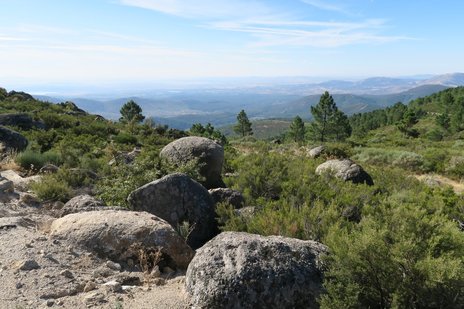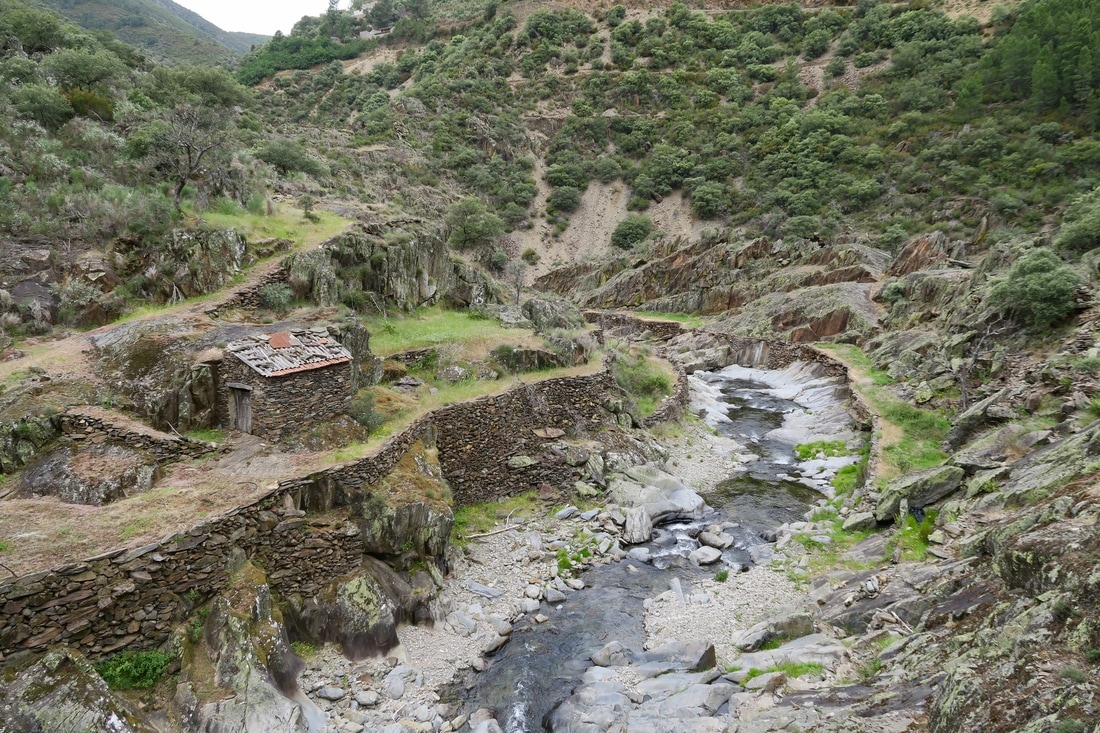The Sierra de Gata sits at the extreme north-west edge of Extremadura. It is remote, quiet, unspoiled and, I think, displays outstanding natural beauty. The sierra slopes are covered with trees, mainly deciduous, which makes walking here during the Autumn a real delight. Rivers rarely run dry, even in the hottest Summer. The area is also noted for its historic villages, friendly people, good food and an ancient language known as 'La Fala'. This is a mixture of old Galician, old Leónese and Portuguese and is spoken by locals and displayed on street signs. The Sierra de Gata is well-served with places to stay while exploring the area. Many villages have really excellent places to eat and relax in lovely old squares. The GR 10-E7 runs through the area and Town Halls all have sectioned maps showing the village-to-village stages that can be easily walked. Obviously the routes are one-way and if transport is problematic calculate the routes as out-and-back distances. None of the stages are difficult and some are quite short; others longer. Enjoy!
Las Hurdes is at the northern tip of Extremadura and takes a bit of an effort to get to. However, I think it's stunning. If you are thinking of going there to walk stay a few nights in one of the small but central villages. The roads in and out of Las Hurdes are winding and many follow rivers as they meander far below the roads. The roads need care but are not impossible — school buses collect youngsters daily to take them to the nearest primary or secondary school which makes for a long day for most Las Hurdes students. The point is, though, if a bus can do the roads, so can you. A map is essential as many a road eventually ends up as a 'dead end' in a tiny village. You won't get lost but it takes a while to get around Las Hurdes. There are many sign posted walking routes all over Las Hurdes and these are popular with Spanish people at weekends in Spring and Autumn. In Summer, every village has a natural pool. Look at Extremadura and click on water on this site for more information.
Las Hurdes is at the northern tip of Extremadura and takes a bit of an effort to get to. However, I think it's stunning. If you are thinking of going there to walk stay a few nights in one of the small but central villages. The roads in and out of Las Hurdes are winding and many follow rivers as they meander far below the roads. The roads need care but are not impossible — school buses collect youngsters daily to take them to the nearest primary or secondary school which makes for a long day for most Las Hurdes students. The point is, though, if a bus can do the roads, so can you. A map is essential as many a road eventually ends up as a 'dead end' in a tiny village. You won't get lost but it takes a while to get around Las Hurdes. There are many sign posted walking routes all over Las Hurdes and these are popular with Spanish people at weekends in Spring and Autumn. In Summer, every village has a natural pool. Look at Extremadura and click on water on this site for more information.
Top photo: the highest waterfall in Extremadura, el Chorrituelo de Ovejuela in October (Walk 5 'The Sierras of Extremadura')

